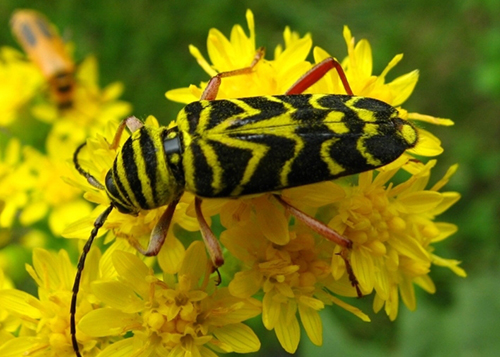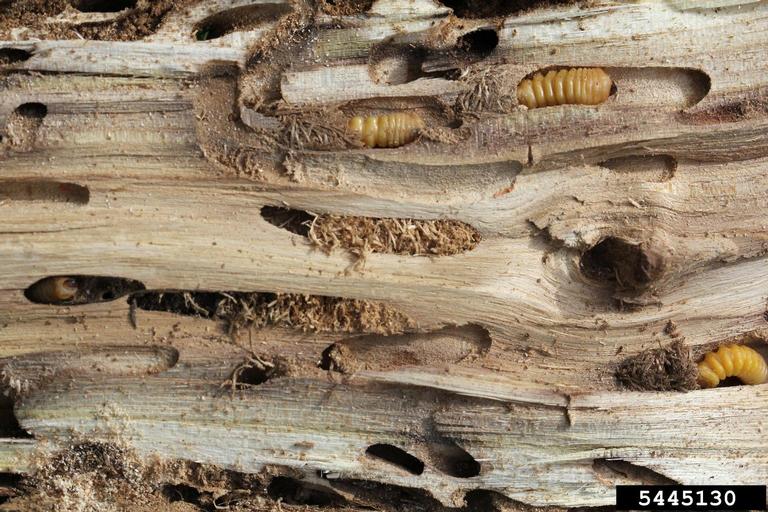Integrated Pest Management
Locust Borer
 Adult locust borer (Kevin D. Arvin, Bugwood.org)
Adult locust borer (Kevin D. Arvin, Bugwood.org)
 Locust borer damage (Whitney Cranshaw, Colorado State University, Bugwood.org)
Locust borer damage (Whitney Cranshaw, Colorado State University, Bugwood.org)
HOSTS
- Black Locust
- Honeylocust
DESCRIPTION
This insect occurs in Eastern Canada and in most of the U.S., wherever its host, black locust, grows. In Utah, locust borer has damaged black locust trees in most northern Utah counties.
BIOLOGY
During peak egg-laying in late September, females deposit 100-200 small, white, oval eggs singly or in groups of six to eight in bark crevices and around wounds on the trunk and larger branches. Eggs hatch in 5 to 8 days and the small white larvae tunnel into the inner bark where they spend the winter as first instars. In spring, larvae resume feeding about the time of bud swell. They bore into the sapwood and eventually into the heartwood, producing a tunnel 3 to 4 inches long.
SYMPTOMS
- Yellow secretions from bores that stain the wood
- Oozing sap and wet spots on the bark
- Coarse frass (sawdust-like excrement) that is visible on the bark.
GENERAL MANAGEMENT
Healthy, vigorous trees have little borer damage. In fact, vigorous spring growth kills many larvae, likely due to high sap flow.
INSECTICIDES
If an insecticide spray is required, the spray should be applied to the trunk and larger limbs, thoroughly wetting the bark. The spray targets egg-laying adults and newly hatched larvae. Spray in mid to late August and repeat 1 month later.

